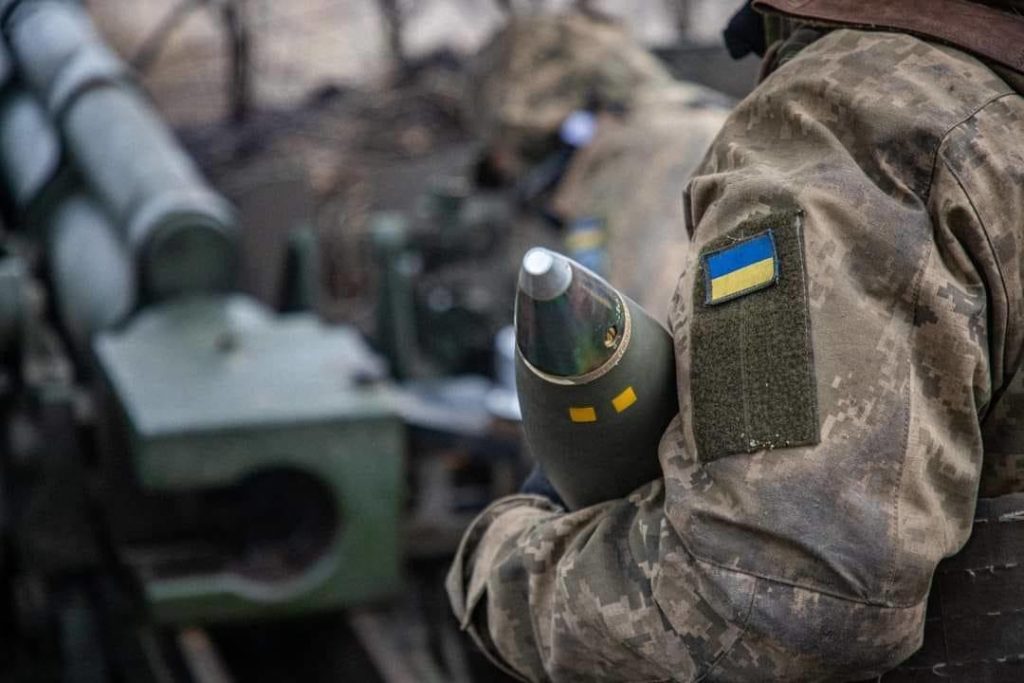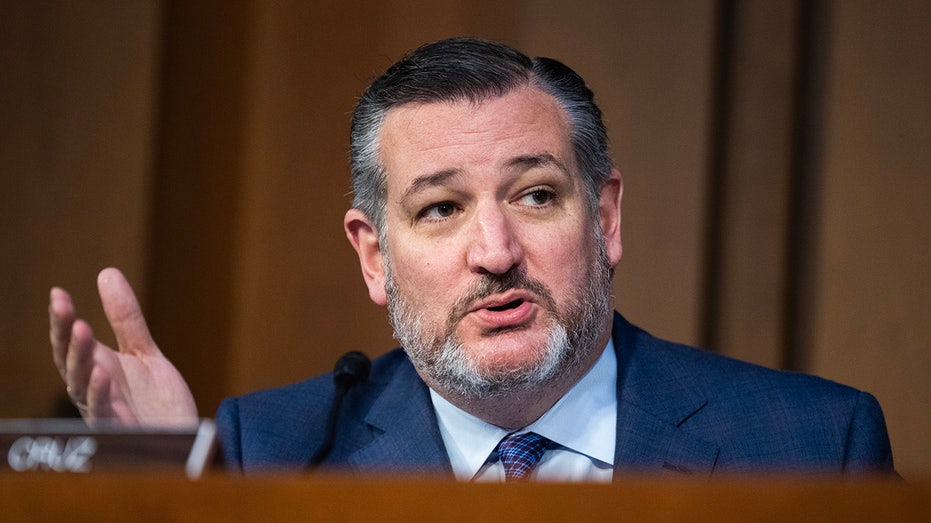Ukraine’s new mobilization law falls painfully short of frontline expectations
While aiming to bolster the country's defense, the long-awaited law betrays frontline soldiers by omitting key provisions for troop rotation and demobilization


After months of endless revisions and over 4,000 proposed amendments, Ukraine’s Parliament has finally adopted a new law aimed at strengthening the nation’s mobilization efforts in the face of Russia’s unrelenting aggression.
With 283 votes in favor, the legislation promises several changes to the military conscription process.
Yet, as the details of the law come into focus, a sense of disquiet permeates the frontline trenches and the wider public. For many, the long-awaited legislation falls painfully short of the decisive action required to confront the existential threat posed by Moscow’s ambitions.
At the heart of this law lies a pressing need to replenish the ranks of Ukraine’s Armed Forces, which have endured substantial losses over the past two years of intense war. As the prospects of a new, large-scale Russian offensive loom on the horizon, the Ukrainian leadership has underscored the urgency of reinforcing its military capabilities.
What’s new in the law?
The primary focus of the new legislation is to establish a comprehensive system for monitoring and accounting for all military-eligible men between the ages of 18 and 60, including those residing abroad.
Within 60 days of the law’s enactment, these individuals will be required to update their military registration data, either in person at territorial recruitment centers (TRCs), administrative service centers (TSNAPs), or through a newly introduced electronic cabinet.
Males in this age range must carry military documentation at all times and present it on demand to police or enlistment officers. Those residing abroad cannot obtain passports or consular services without proper military registration.
Authorities will now have the power to initiate court proceedings to revoke the driving privileges of draft evaders temporarily. Additionally, fines for violating conscription laws during wartime have been increased tenfold, reaching amounts of up to UAH 25,500 (approximately $700) for individuals and UAH 59,500 (around $1,600) for businesses and officials.
Another notable provision grants exemptions and deferments from conscription to certain groups, including parents of three or more minor children (except for those with alimony arrears), single parents, adoptive parents, individuals whose close relatives have died or gone missing during the conflict, and those with disabilities.
Additionally, law enforcement personnel, members of parliament and their assistants, heads of ministries and government agencies, judges, and diplomats will be eligible for a “reservation” from mobilization.
The law also introduces the concept of “basic military training,” which will be mandatory for all male students enrolled in vocational, technical, and higher education institutions starting September 1, 2025. This training, lasting up to five months, aims to prepare potential recruits for future military service.
What’s missing?
The mobilization law has faced criticism for omitting crucial aspects that were initially proposed but ultimately excluded during the legislative process.
One of the most contentious omissions is the lack of provisions regulating the demobilization and rotation of military personnel currently serving on the front lines.
Initially, the draft law stipulated a maximum service period of 36 months, after which soldiers would be eligible for discharge. However, this clause was removed at the behest of the Commander-in-Chief of the Armed Forces, Oleksandr Syrskyi, who argued that such matters should be addressed in a separate legislative act.
Ukrainian parliament approves amendments to mobilization law
Member of Parliament Roman Lozynsky commented on the law on the day of the adoption of the amendments:
“They removed a key provision for my fellow soldiers. Those who volunteered to go to the front in the first days. A provision that brought some clarity and terms for the right to demobilize. And this injustice, against the backdrop of the president’s self-removal, becomes even stronger.
It’s unfair that a few hundred thousand civilians who care about this country and were forced to become soldiers are stopping the enemy.”
He also added:
“All 100% of the parliamentary amendments were rejected. All my 65 as well, although they considered some specific proposals when preparing the committee’s amendments. Proposals from local self-government were ignored, embedding decisions in the text that are guaranteed not to work.”
Critics also pointed out that an exceptionally large number of people are still not subject to mobilization.
While the specified categories for exemption from mobilization are clear, it is unfortunate that many individuals exploit these rules to avoid conscription. This includes actions such as falsely claiming to be a caregiver for an ill person or fabricating medical documents.
Furthermore, aside from driving restrictions and minor fines, there are no significant consequences for dodging mobilization.
The following categories of citizens are not subject to mobilization:
- Citizens unfit for military service due to health conditions or age, as confirmed by a military medical commission.
- Individuals temporarily unfit for military service due to health conditions for a period of 6-12 months, as determined by a military medical commission. They are required to undergo another medical examination after the specified period.
- Protected employees (details are provided later in the text).
- Parents raising three or more minor children, except for those who are divorced and have not paid alimony for more than three months.
- Men and women raising at least one child under the age of 18.
- Parents, guardians, foster parents, adoptive parents, and patronage educators raising a minor child with a disability or a severely ill child.
- Parents supporting an adult child with a disability of the first or second group.
- Adopters, guardians, caregivers, foster parents, and patronage educators who support a minor child.
- Citizens engaged in constant care of a sick spouse, child, or parents.
- Guardians of a person declared incapacitated by a court.
- Individuals with a spouse (husband or wife) with a disability of the first or second group, or with a third-group disability caused by cancer, amputation, mental disorder, cerebral palsy, or other paralytic syndromes.
- Citizens supporting one of their parents or one of their spouse’s parents with a disability of the first or second group.
- People raising a minor child and having a spouse who is serving in the military.
- Citizens whose close relatives died or went missing during the Anti-Terrorist Operation (ATO), Joint Forces Operation (OOS), or full-scale war.
- Family members of Heroes of Ukraine who died during the Revolution of Dignity.
Additionally, the law provides a list of public officials who are entitled to a deferment from military service during mobilization. This includes ministers and their deputies, heads of state bodies and authorities, diplomats, people’s deputies and deputies of the Verkhovna Rada of Crimea, the Human Rights Commissioner of the Verkhovna Rada, the head and members of the Accounting Chamber, judges, including those of the Constitutional Court of Ukraine, members and disciplinary inspectors of the High Council of Justice, and members of the High Qualification Commission.
The law identifies categories of military-eligible individuals who are exempt from mobilization, including:
- Category “A” civil servants, heads of regional and district councils, and heads of villages, settlements, and cities.
- Category “B” and “C” civil servants and employees of local self-government bodies, up to 50% of all military-eligible individuals working in an institution.
- Employees of the National Police, the National Anti-Corruption Bureau, the State Bureau of Investigation, prosecutorial bodies, the Bureau of Economic Security, the State Emergency Service, the State Criminal Execution Service, the Judicial Protection Service, courts, pre-trial investigation bodies, and patronage services of state bodies.
- Workers of enterprises, institutions, and organizations that carry out mobilization tasks.
- Employees of enterprises critical to the defense needs or economic functioning during martial law.
To win in a war of attrition, Ukraine should mobilize women, report argues
Many military personnel believe that the list of exempt individuals should be narrowed.
For example, the commander of one of the Ukrainian army battalions commented to journalist Yuriy Butusov:
“There should be no exemptions for law enforcement and government agencies. The patrol police should patrol, and all other law enforcement agencies should mobilize at least 50% of their staff. And they should be sent not to specialized special forces or special units, but to reinforce regular infantry.
The Verkhovna Rada, the president’s office, the government, all authorities – should mobilize 50% of their male employees. The authorities must set an example of defending the homeland, not avoiding mobilization. Everything that does not work for defense and security must contribute some people to the war.
Yes, not everyone can fight at the front due to health reasons. But everyone can serve in the rear. Elderly people should serve at checkpoints and in supply units, while healthy individuals should be on the front line.”
The military also criticizes the law because those already mobilized have few rights and very limited opportunities for demobilization. In addition, military personnel face criminal liability for violations, while civilians are only subject to minor fines.
Rules established for military personnel
The initial draft of the Ukrainian mobilization law proposed strict conditions for the demobilization of military personnel, but these provisions were excluded during the preparation for the second reading of the law. This was done following appeals from the Commander-in-Chief, the Defense Minister, and the Prime Minister who argued that issues related to demobilization and rotation of military personnel during wartime should be addressed in a separate legislative act.
The law lists family circumstances and other valid reasons that allow military personnel to be discharged from service, such as pregnancy, raising a minor child alone, adoption, and the need to constantly care for a spouse with a disability.
Additionally, the law provides for additional incentives for military personnel during wartime, including rewards for destroyed or captured enemy equipment, exemption from fines and interest on loans, compensation for the first mortgage payment, and the right to receive a certificate for purchasing a vehicle.
The annual leave for military personnel remains unchanged at up to 30 days, plus an additional 10 days for family circumstances or other important reasons.
Military personnel are also entitled to additional leave for destroying enemy equipment, but no more than 15 days per year.
Finally, the parliament has instructed the government to develop regulatory acts regarding the conditions, amounts, and procedures for motivational payments to military personnel during wartime, including a one-time reward for those who perform combat tasks on the front lines for 30 days.
The turn to classical conscription
In the early months after the February 2022 invasion, a wave of volunteers overwhelmed military recruitment centers, which couldn’t handle the numbers. However, that flow of volunteers dried up as the war prolonged, and Ukraine’s forces required a steady stream of replacements and fresh recruits to sustain operations.
“We must help people make this unnatural choice” – Ukraine fighters on mobilization
The military was forced to turn to classical conscription, but faced major hurdles.
Ukraine’s legislation governing mobilization had gone years without updates, poorly aligning with the demands of wartime. Crucially, the military’s personnel records system was deeply flawed – territorial centers lacked basic information like residence and social status for millions of eligible Ukrainians who avoided registering to stay off the military’s radar.
This led to the scenario of “notification teams” having to detain men of conscription age not in the military database and deliver them to recruitment centers.
Combat units complained frequently about the poor quality (including non-sufficient training) of conscripted reinforcements being assigned to them. Observers also noted the average age of these mobilized troops exceeded 40, and they disproportionately hailed from rural areas ill-prepared for modern warfare.
After nearly a year of bureaucratic hand-wringing and delaying an overhaul, the government introduced a draft mobilization law in December, which was swiftly criticized and withdrawn. A revised version surfaced in late January, attracting over 4,000 proposed amendments which a parliamentary committee spent weeks reviewing before the final bill reached the floor on Wednesday.
Commanders like Gen. Yuriy Sodol, pleading during the run-up to the vote, underscored the law’s urgency:
“I beg you, pass this law. We really need it. We are holding the front with our last strength.”
Sodol revealed Russian forces outnumbered Ukraine’s 7-to-1 or even 10-to-1 along some sections of the 600-mile front.
Bot, the commander of the 1st mechanized battalion of the 3rd assault brigade, points out that the contemporary culture encourages people to think only about their rights, not cultivating responsibility:
“We have a disease in society – everyone demands their rights. Everyone is completely focused on their rights… but there must also be responsibilities. Or what? Are we just anarchists: we got together, everyone has rights, while duties are unnecessary? Citizens must protect their state,”Bot says.
Related:
- Ukrainian parliament approves amendments to mobilization law
- To win in a war of attrition, Ukraine should mobilize women, report argues
- Ukraine Parliament passes mobilization bill in first reading
- Ukraine extends martial law, mobilization till mid-May 2023
- Ukraine’s Commander-in-Chief addresses mobilization and frontline situation in briefing
- Russia to launch new wave of mobilization in January 2023
- Putin announced mobilization in Russia
- mobilization Archives: Russia is currently mobilizing new forces at the rate equivalent to losses — ISW
You could close this page. Or you could join our community and help us produce more materials like this.
We keep our reporting open and accessible to everyone because we believe in the power of free information. This is why our small, cost-effective team depends on the support of readers like you to bring deliver timely news, quality analysis, and on-the-ground reports about Russia's war against Ukraine and Ukraine's struggle to build a democratic society.
A little bit goes a long way: for as little as the cost of one cup of coffee a month, you can help build bridges between Ukraine and the rest of the world, plus become a co-creator and vote for topics we should cover next. Become a patron or see other ways to support.



